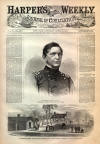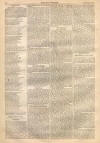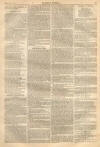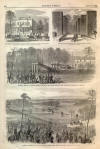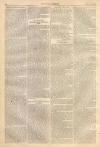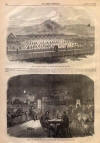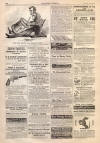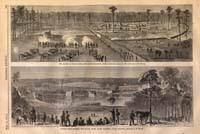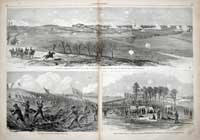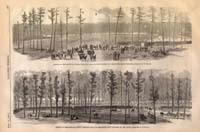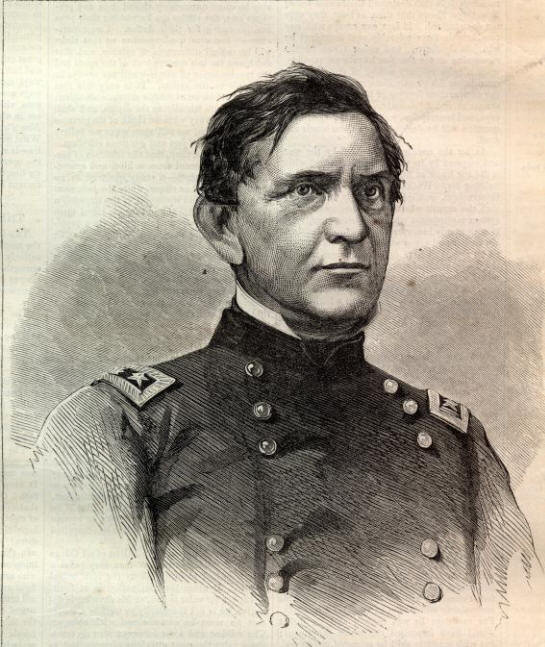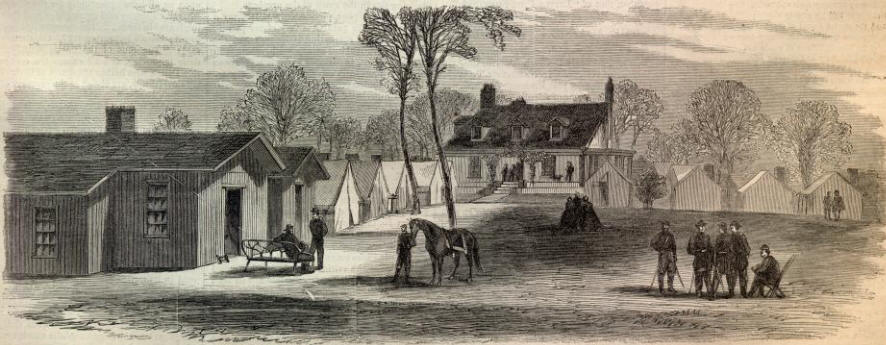General Edward R. S. Canby
|
|
This Site:
|
VOL. IX.—No. 433.] NEW YORK, SATURDAY, APRIL 15, 1865. [SINGLE COPIES TEN CENTS. $4.00 PER YEAR IN ADVANCE. Entered according to Act of Congress, in the Year 1865, by Harper & Brothers, in the Clerk's Office of the District Court for the Southern District of New York. MAJOR-GENERAL EDWARD R. S. CANBY. [PHOTOGRAPHED BY LILIENTHAL, 131 POYDRAS STREET, NEW ORLEANS.]MAJOR-GENERAL CANBYTHE Gulf Department has been in "this war so far removed from the vital centre of the rebellion that our interest in it has not been very intense. Especially of late, when the series of brilliant victories gained by THOMAS, SHERMAN, SHERIDAN, TERRY, and GRANT, extending in one continuous nine of glory from Nashville across the States of Georgia and South Carolina, and up the Atlantic Coast to the Shenandoah Valley, has absorbed all our attention, we have overlooked important movements in the Southwest, and have lost sight of some of the bravest heroes of the war. Among our veteran officers there is probably none who, for fidelity, integrity, and hard service, has more claims upon the gratitude of our people than Major-General EDWARD R. S. CANBY. General CANBY has been for nearly thirty years in the military service. A native of Kentucky, he entered the Military Academy at West Point in 1835, from which he was graduated with the rank of Second Lieutenant. In 1846 he was promoted to a First Lieutenancy, and the year after to a Captaincy. In the Mexican war he gained high distinction in the battles of Cerro Gordo, Contreras, Churubusco, and Belen Gate. He was rapidly promoted, first to a Major and then to Lieutenant-Colonel by brevet. In the war on the frontier, also, he performed important services, which gained for him a high place in the esteem of the army and the people. General CANBY entered into this war against the rebellion with the devotion of spirit and the disinterested patriotism which characterize the true soldier. Placed early at the head of ?the Department of New Mexico, he maintained his ground in that Territory with an obstinacy which won the victory even from superior numbers. His operations in this department were conducted under many disadvantageous circumstances. He was remote from the seat of government, and surrounded by hostile tribes of Indians. The vicinity of Texas enabled the rebels to confront him with an army superior in numbers. The country was almost a Sahara. Available springs of water were many miles apart, and his fortified posts must of necessity lie upon the banks of the rivers. It was under these circumstances that, in the spring of 1862, he fought the battle of Fort Craig, called by the enemy the battle of Valverde, against an army of Texans under the rebel General W. U. SIBLEY. This battle was fought in the open field against great odds; and the result, though a repulse, was in no sense a disaster. He was compelled to retire upon Fort Craig, where the rebel General declined to assault him. Here for some weeks General CANBY was compelled to remain, powerless for an offensive movement. Reinforced at length, he boldly took the field, and in a brief space of time drove the rebels back into Texas. General CANBY superseded General BANKS in the command of the Department of the Gulf, and is now at the head of the operations against Mobile. This city is chiefly important from its situation at the mouth of the Alabama and Mobile rivers. Its capture will wind up the war in the Southwest. General CANDY'S combinations , are such as must inevitably bring success to the national arms. Since General CANBY has been at the head of the Gulf Department he has, in the midst of temptations that would corrupt many men, preserved his integrity intact. No officer in the army can produce a cleaner record. None is more respected and beloved by the soldiers of his command. The photograph from which, on this page, we reproduce the portrait of General CANBY was taken by Mr. THEODORE LILIENTHAL, of New Orleans; to whom we are indebted for many similar courtesies in the past.
THE INTERIOR OF FORT
|
||||||||||||||||||||||||
|
|
||
|
|
Site Copyright 2003-2018 Son of the South. For Questions or comments about this collection, contact paul@sonofthesouth.net |
|
|
Are you Scared and Confused? Read My Snake Story, a story of hope and encouragement, to help you face your fears. |
||
